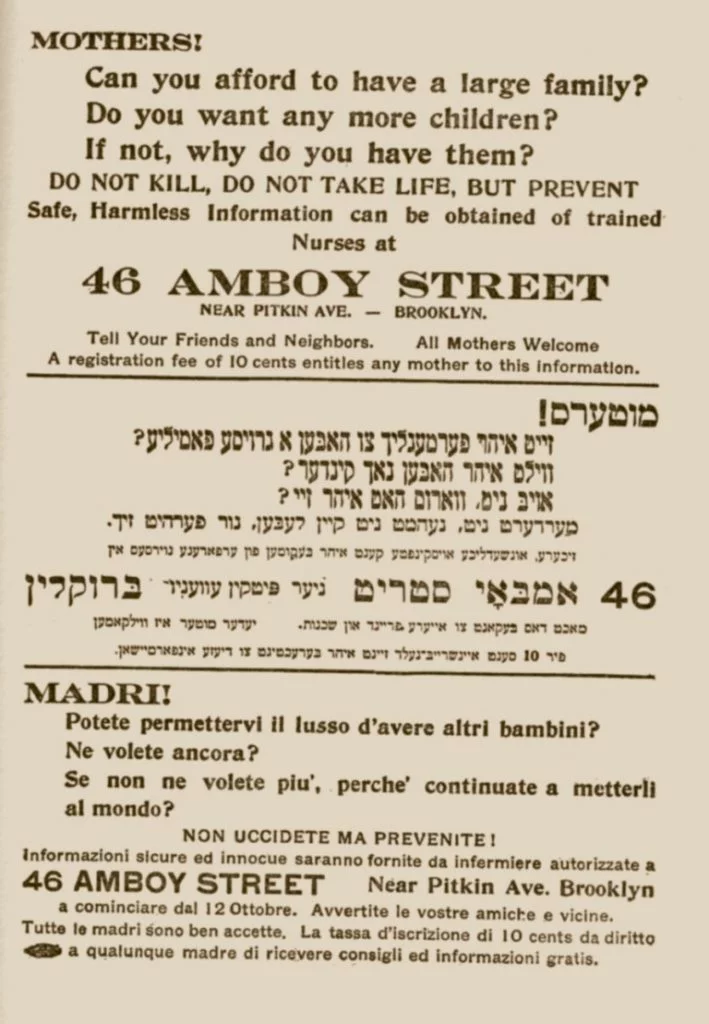Sanger opened the clinic on October 16th 1916, along with her sister Ethyl Byrne, who was a registered nurse, and an interpreter named Fania Mindell. Sanger chose Brownsville for her first clinic because it was one of the most densely populated areas of NY with blacks, whom she wanted to eliminate from society. The illegal clinic was shut down just 10 days later after a police raid.
The Brownsville Clinic was modeled after the birth control clinics that Sanger observed in Holland in 1915. Each woman who visited the clinic received Sanger’s pamphlet What Every Girl Should Know, a short lecture on the female reproductive system, and instructions on the use of various contraceptives for a charge of ten cents.

The Clinic operated secretly, relying on word of mouth and covert advertising to get women into the door. It served more than 100 women on its first day, and reached approximately 400 in the ten days that it was operational. On October 26th an undercover police woman and vice-squad officers raided the clinic and arrested Sanger, Byrne and Mindell.
Sanger was released from jail the following morning. She re-opened the Clinic on November 14, but was arrested again, this time charged with maintaining a public nuisance. She opened the Clinic once more on November 16, but police forced the landlord to evict Sanger and her staff, and the Clinic closed its doors a final time.
Sanger’s trial began on January 29. Sanger was convicted and offered a suspended sentence if she promised not to repeat the offense, but she refused to make that promise. As a result of this she was given a choice of a fine or jail sentence; she chose to spend thirty days in the Queens County Penitentiary, and finished her sentence without incident.
Sanger appealed her conviction, and her case journeyed through the courts for a year until the New York Court of Appeals sustained her conviction in January of 1918. Despite ruling against her Judge Frederick Crane’s decision included a more liberal interpretation of New York State’s “Little Comstock” law, enabling physicians for the first time to legally prescribe contraception for general health reasons rather than exclusively for venereal disease.
The ruling, brought about by Sanger’s willingness to break laws, became the bedrock for doctor-staffed birth control clinics, an integral part of the birth control movement’s goal to afford all women, regardless of income, access to effective contraceptives.
Beginning quote: New York Call, Oct. 22, 1916, 8. The article by George Martin ran under the title “‘Police can’t Stop Me,’ Says Margaret Sanger,” with the subheading “Birth Control Clinic Secret and Oral, She Declares – More to Be Opened Soon.”



